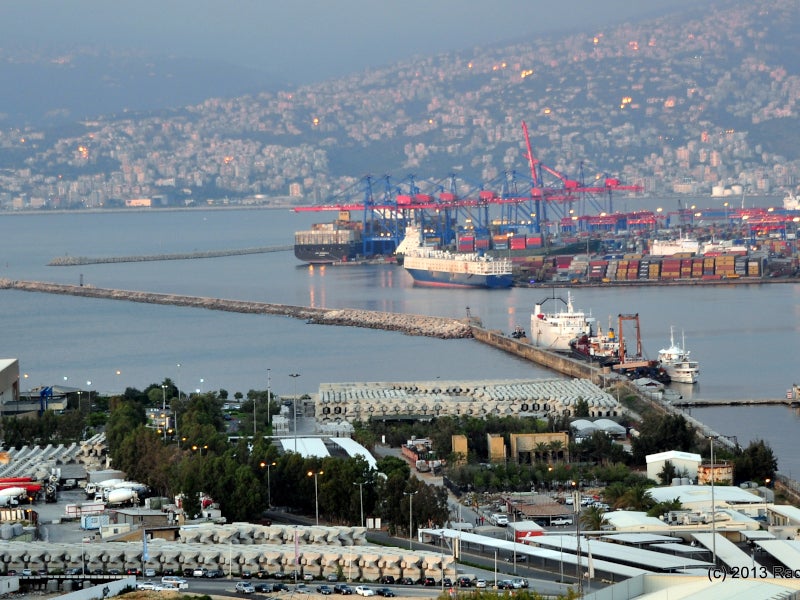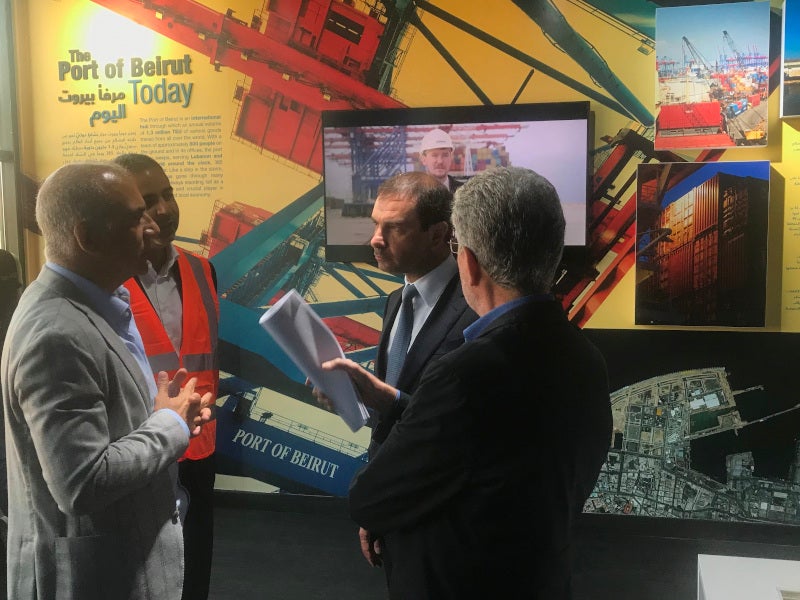Port of Beirut is the major and busiest port in Lebanon and one of the busiest in the Eastern Mediterranean. The port is owned by Government of Lebanon and operated by Gestion et exploitation du port de Beyrouth.
It is one of the top ten seaports in the Mediterranean Sea and serves as a gateway to the Middle East. The latitude-longitude coordinates of the port form the midpoint for three continents, Europe, Asia and Africa.
The port has the capacity to handle the largest mother vessels of the shipping lines and is accessible through the road network.
Beirut port won a gold prize for the Information Technology Award for the world’s best Port IT solution in 2015. The port operator invited bids for the operation, management and maintenance of the container terminal at the Beirut port in January 2020.
The shipping port witnessed two massive explosions in August 2020, which killed more than 100 people and injured over 4,000. The explosion was reportedly caused by approximately 2,750t of ammonium nitrate that was stored in a warehouse at the port. The port infrastructure, including grain silos and warehouses, were severely damaged by the blasts.
Port of Beirut background
Beirut port’s history dates back to the 15th century and the port underwent several changes and expansions since its inception. A major expansion programme was implemented at the port, following the end of the civil war in Lebanon in 1990.
“It is one of the top ten seaports in the Mediterranean Sea and serves as a gateway to the Middle East.”
The upgrade and expansion project involved the renovation of port facilities and the construction of a new container terminal and administration buildings. It also witnessed improvements to the existing cargo area, buildings, cranes, handling equipment, quay walls and marine safety infrastructure.
The Beirut Port Silos, which were damaged by the blast, were previously rehabilitated with works, including sandblasting and water jetting, grinding cracks and concrete surface, installation of galvanised anchor bolts and dry mix trowel finish shot Crete.
Port of Beirut infrastructure
Spread over 1.2 million square metres, the port has a water basin area of more than one million square metres. The total length of quays is approximately 5,655m, including 1,654m dedicated for general cargo operation and 1,334m for containers operation.
The port comprises 16 berths with a total length of approximately 5,155m. It also has four basins and a 220m-long bulk quay, which is 13m deep. It has a container terminal, which commenced its operations in February 2005. The 1,100m-long Quay 16 is dedicated for containers and is served by six ship-to-shore gantry cranes and 1,840t rubber-tyred gantry cranes.
The port has the capacity to accommodate 475 cars at the free zone, 160 trucks at administrative buildings gate and 140 trucks at gate number nine.
The free zone has four modern buildings. The port also accommodates three industrial buildings, which are equipped with modern features to enable the transportation of goods to any industrial warehouse in the buildings.
It also accommodates a four-storey duty-free market spread over 2,800m² of space with 46 duty-free shops.
Inaugurated in July 2007, a logistic free zone area receives international cargo and conducts operations such as packing and re-packing for export or import.
Port of Beirut west bank expansion details
The annual capacity of the container terminal was increased from 700,000 twenty-foot equivalent units (TEU) to 1.5 million TEU in 2013, following an upgrade. The contract for the terminal expansion was awarded in July 2009.
The Quay 16 was also extended by 500m to a total length of 1,100m. The port expansion also included a multi-purpose terminal at berth 14 to handle the movement of both containers and general cargo with a storage area of approximately 140,000m².
A 500m-long, 15.5m-deep new berth was developed at the port. The annual container handling capacity was increased by approximately 200,000 TEU, while the capacity of general cargo increased by 500,000t.
The terminal design can accommodate new patios to handle the increased movement of general cargo or containers. An additional storage area was created to improve productivity during unloading ships. The reduction in mooring time resulted in decreased shipping costs.
The expansion also involved the construction of a specialised station for handling iron consignments.
Contractors involved
Beirut Port Authority selected Dar Group for the rehabilitation and expansion of the Beirut Port in February 2017.
Aarsleff received a $31.43m contract for the expansion of Beirut port in October 2013. Ramboll provided detailed design for the expansion of quays 12-14.
BATCO Group was responsible for the rehabilitation of Silos at Beirut port.






